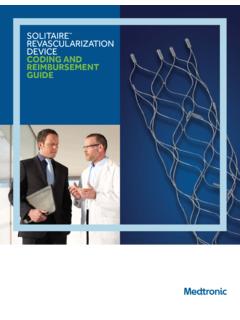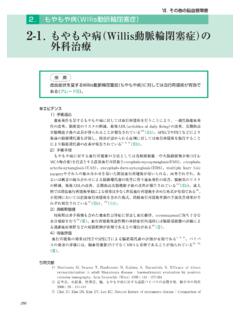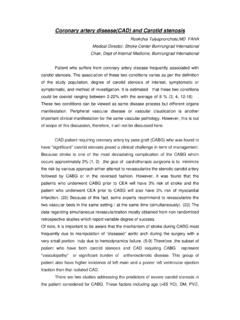Transcription of DRUG NAME: Ponatinib - bccancer.bc.ca
1 Ponatinib DRUG NAME: Ponatinib SYNONYM(S): Ponatinib hydrochloride, AP245341,2 COMMON TRADE NAME(S): ICLUSIG CLASSIFICATION: miscellaneous Special pediatric considerations are noted when applicable, otherwise adult provisions apply. MECHANISM OF ACTION: Ponatinib is a tyrosine kinase inhibitor (TKI) with high-affinity against wild-type and mutant BCR-ABL kinase, as well as activity against vascular endothelial growth factor receptor, platelet-derived growth factor receptor, sarcoma kinases, fibroblast growth factor receptor, KIT (mast/stem cell growth factor receptor), ephrin, and RET (rearranged during transfection).
2 Ponatinib is more potent in vitro than imatinib against wild-type BCR-ABL. Structurally, Ponatinib contains a carbon-carbon triple bond to accommodate the T315I mutation, thus exhibiting anti-tumour activity against BCR-ABL mutant T315I PHARMACOKINETICS: Oral Absorption time to peak: 6 h; pH dependent solubility Distribution extensively distributed in the extravascular space cross blood brain barrier? no information found volume of distribution1,2 1101-1223 L plasma protein binding >99% Metabolism mainly hepatic via CYP 3A4; also metabolized by esterases and/or amidases active metabolite(s) no information found inactive metabolite(s) carboxylic acid and N-desmethyl metabolite Excretion mainly via feces urine 5% feces 87% terminal half life1,2 22-24 h clearance5 35 L/h Adapted from standard reference1 unless specified otherwise.
3 USES: Primary uses: Other uses: *Leukemia, chronic myelogenous *Leukemia, acute lymphoblastic *Health Canada approved indication SPECIAL PRECAUTIONS: Caution: Vascular occlusion adverse events are reported; Ponatinib is not recommended in patients with a history of myocardial infarction, prior revascularization or stroke. Hypertension may contribute to the risk of arterial thrombosis and occlusion events and should be well controlled prior to starting Impaired wound healing has been associated with vascular endothelial growth factor (VEGF) inhibitors; hold Ponatinib 7 days prior to surgery and re-initiate post-surgery based on clinical assessment of the wound ,4 BC Cancer Drug Manual Page 1 of 8 Ponatinib Developed: 1 December 2016 Revised: 1 February 2018 Ponatinib Ocular toxicities leading to blindness are reported.
4 Comprehensive eye exams prior to and during treatment are Reactivation of Hepatitis B virus (HBV) has sometimes occurred in chronic carriers of HBV after receiving BCR-ABL tyrosine kinase inhibitors; test for HBV infection prior to treatment and monitor for signs of active HBV Special populations: Elderly patients (65 years or older) are more likely to experience adverse reactions such as vascular occlusion, thrombocytopenia, peripheral edema, increased lipase, dyspnea, asthenia, decreased appetite, and muscle ,4 Carcinogenicity: no information found Mutagenicity: Not mutagenic in Ames test.
5 Ponatinib is not clastogenic in mammalian in vitro and in vivo chromosome Fertility: No fertility studies have been conducted; however, degeneration of testes epithelium and follicular atresia with associated endometrial atrophy have been reported in animal Pregnancy: FDA Pregnancy Category There is positive evidence of human fetal risk, but the benefits from use in pregnant women may be acceptable despite the risk ( , if the drug is needed in a life-threatening situation or for a serious disease for which safer drugs cannot be used or are ineffective).
6 Embryo-fetal toxicity ( , post-implantation loss, reduced fetal body weight, and multiple soft tissue and skeletal alterations) has been reported in animal studies. Women of childbearing potential and males should use contraception during Breastfeeding is not recommended due to the potential secretion into breast milk. SIDE EFFECTS: The table includes adverse events that presented during drug treatment but may not necessarily have a causal relationship with the drug. Because clinical trials are conducted under very specific conditions, the adverse event rates observed may not reflect the rates observed in clinical practice.
7 Adverse events are generally included if they were reported in more than 1% of patients in the product monograph or pivotal trials, and/or determined to be clinically ORGAN SITE SIDE EFFECT Clinically important side effects are in bold, italics blood and lymphatic system/ febrile neutropenia anemia (3-23%, severe 8-55%)1-3 febrile neutropenia (1-25%, severe 1-60%)1-3 leukopenia (severe 12-63%) lymphocytopenia (severe 10-37%)2 neutropenia (severe 23-63%)1,2 thrombocytopenia (severe 34-57%)1,2 cardiac atrial fibrillation (2 -4%, severe 2%)1,2 atrioventricular block (<1%)2 bradycardia (1%, severe <1%) heart failure, including fatalities (2-15%, severe 1-8%)1-3.
8 See paragraph following Side Effects table myocardial infarction (2-12%, severe <2%)1,2 BC Cancer Drug Manual Page 2 of 8 Ponatinib Developed: 1 December 2016 Revised: 1 February 2018 Ponatinib ORGAN SITE SIDE EFFECT Clinically important side effects are in bold, italics palpitations (2%) pericardial effusion (1-4%), severe 1-2%)1,2 peripheral ischemia (8%)2 sick sinus syndrome (<1%)2 supraventricular tachycardia (5%)2 eye blurred vision (3-6%)1,2 conjunctivitis (1-2%, severe 1%) dry eyes (2-5% severe 1%) retinal toxicity, including macular edema, retinal vein occlusion, retinal hemorrhage (3%)2.
9 See paragraph following Side Effects table gastrointestinal emetogenic potential: low9 abdominal pain (4-49%, severe 2-10%)1-3 ascites (<1%)2 constipation (5-47%, severe 1-3%)1,2 diarrhea (2-26%, severe 1-3%)1,2 dry mouth (1-6%) dyspepsia (1-3%) gastroesophageal reflux disease (2%) gastrointestinal hemorrhage (2-11%, severe 6%)2 gastrointestinal fistula, perforation (<1%)2 nausea (3-32%, severe 1-2%)1-3 pancreatitis (5-8%, severe 3-6%); see paragraph following Side Effects table stomatitis (2-23%, severe 1-3%)1-3 vomiting (3-24%, severe 1-2%)1-3 general disorders and administration site conditions asthenia/fatigue (6-39%, severe 1-6%)1-4 chills (3-13%, severe 2%)1,2 influenza-like illness (1-2%, severe 1%) pain (1-16%, severe 1-3%)1,3 peripheral edema (5-22%; severe <1%)1,2 pyrexia (3-32%, severe 1-5%)1-3 hepatobiliary acute hepatic failure (<1%)2.
10 See paragraph following Side Effects table infections and infestations cellulitis (2-11%, severe <3%)2,3 folliculitis (2-6%) nasopharyngitis (3-12%)2 pneumonia (1-13%, severe 1-11%)1-3 sepsis (1-22%; severe 1-22%)2,3 BC Cancer Drug Manual Page 3 of 8 Ponatinib Developed: 1 December 2016 Revised: 1 February 2018 Ponatinib ORGAN SITE SIDE EFFECT Clinically important side effects are in bold, italics upper respiratory tract infection (1-11%, severe <2%)1-3 urinary tract infection ( 12%, severe 1%)2,3 investigations alkaline phosphatase increase (37%, severe 1-4%)1,2 ALT increase (53%, severe 4-8%)1,2; see paragraph following Side Effects table amylase increase (3%, severe 1-5%)1,3 AST increase (41%, severe 3-6%)1,2.














